Say what you will about 3D, all signs seem to point to the fact that it isn’t going anywhere anytime soon. I had been hesitant to sign up for the Sony/ICG 3D training courses offered for free to members of Local 600 – International Cinematographer’s Guild in good standing (which I am), but after Joel David Moore told me that we had a 3D project in the pipeline, there wasn’t enough time in my schedule to take the 3-day course. Instead, I read a bunch of articles and posts on the subject. The latest ICG magazine came to my doorstep a few days before principal photography and I quickly read the issue that was conveniently devoted to 3D filmmaking (the 2nd annual edition). I’ve always been a fan of experiential learning anyways…
My favorite quote of the shoot came from our rig tech/owner, Tonaci Tran, when he stated that the technology that we were using is so “new that it isn’t cutting edge, it is bleeding edge.” Let’s just say that there was some carnage around the set as a result. Through some unfortunate circumstances, the camera department was thrown a Sandy Koufax caliber curve ball and had to build camera in steadicam mode for the first time while everyone was on the clock for the first day of shooting. For those who don’t know, this is a major anomaly for any production. Even on simple 2D shoots, the camera assistants will go through and thoroughly prep the camera to be sure that the proper cables and accessories make their way to set. Depending on the size/scope of the show (–budget–) and the amount of equipment needed, the prep can take anywhere from a few hours to a few weeks. Considering we are one of the first crews to ever use the Element Technica Atom 3D rig for the RED EPIC cameras, this was disastrous. As a result, our first shot wasn’t taken until almost 5 hours after call (we had planned to be on our third scene by then).
Normally one would point to their crew, yell a bunch, and then fire everyone. However, we had some of world’s finest (3D) cameramen on our set: many alumni from James Cameron’s obscure 3D film, “Avatar.” The technical delays that we faced throughout the show were side effects of being early adopters of the system, not from poor staffing. The rig is so new that we had to use third party accessories instead of fully integrated parts developed specifically for the Atom. One example is the lens controller designed by cmotion instead of Element Technica, the maker of the Atom. This extra equipment also made our rig bulkier and heavier than advertised.
Aside from components that made our rig function, we chose to employ specialized lenses developed by V3 (Vision III Imaging, Inc.) out of Virginia. They modified a pair of Angenieux Optimo DP Zoom lenses (Rouge) (16-42mm – T2.8) with a proprietary process that modifies the parallax of the lens to create the illusion of more depth. The system is pretty remarkable. Not only does the system “create” more depth in 3D/stereo cinematography using “parallax scanning,” but they also have a great line of 2D products! We had the honor of hosting the inventor of the system, Chris Mayhew, for the duration of our shoot. Like everything else on our set, this is new technology. Chris’s presence was imperative to guide us through the operation of his system, which is still in beta. He does a great job explaining/demonstrating the benefits of V3 in this video. The only drawback of the lenses came when we switched from handheld mode to studio mode: adjustments must be made to the orientation of the parallax scanning. The entire process only takes a few minutes, but once the system is further along in its development, it may only take seconds.
We had other tech-cameos as well, including our very own representative from RED, Sean Ruggeri. Since the camera is also in beta release (notice the theme?), Sean’s presence as camera tech was quite comforting. He knows the EPIC inside and out and was able to bail us out of some sticky situations with the young camera (or should I say, computer?). Considering there isn’t a manual available to read/download, I enjoyed asking him all kinds of questions over the course of the shoot.
It would be an understatement to say that this camera is a game changer. I’m a huge supporter of the RED ONE, the MX upgrade, and–now their logical successor–the EPIC. It does everything the RED ONE did, but in a sexy, better, smaller, and lighter package! I don’t want to gush, because it is still early in the software stages, but this is the first camera that I’d consider purchasing. The obvious improvements (resolution, light sensitivity, high speed abilities, etc.) are pretty well documented, so I won’t re-hash.
The new touch-screen interface/operating system available on the LCD screen is a much welcomed departure from the design of the RED ONE. The menus are more logical and can be accessed much faster than before. The top banner allows easy control over color temperature, compression ratio, ISO, frame rate, shutter angle, and more. There are also hidden shortcuts: if you touch the 4 channels of audio, then it takes you to the audio menu for adjustments. If you touch the waveform, then it brings up the different waveform and false color viewing options. There is also a new false color mode that shows you exactly where your exposure falls below and above the threshold of the RAW capabilities. This is probably my favorite addition: there is no doubt about where any clipping will be present.
If you spread your two fingers apart like one does on an Apple trackpad/iPhone to zoom in, then the screen magnifies into 1:1 mode so you can check focus (the opposite motion returns the camera to normal mode – except in this early build, the camera often needs to be rebooted as a result). Speaking of which, say goodbye to the RED logo of death: the EPIC boots up in 7 seconds! Hopefully they will release a 7″ touch-screen LCD for critical focus soon, but the 5″ RED PRO 5.0 packs a resolution punch that will amaze. I’m also happy to say that the ambiguous “Redcode” scale is obsolete. Instead of choosing between Redcode 28, 36, and 42, you can select a wide variety of options from 3:1 to 18:1. I don’t know about you, but my brain understands ratios better than a arbitrary number.
The folks at RED claim that 2.5:1 is mathematically lossless compression, so 3:1 is an amazing option: just be sure to buy a lot of hard drives. We recorded most of our footage at 5:1, but on the few occasions where we boosted the ISO to 1000 (yes, it happened), we bumped the compression up to 3:1 with the hopes that it would decrease the presence of noise/artifacting. Most productions will find that a ratio between 5:1 and 12:1 will be satisfactory.
Most of the drawbacks of the EPIC are temporary. The current build only allows 5K recording, which is unfortunate because we had planned to use different (lower) resolutions to create the illusion that we had longer lenses on set (we only had one pair). Of all the handicaps, this was the least noteworthy because we can achieve the identical result in post by zooming into the negative. Normally I would put up a fight about such a strategy, but in stereo cinematography the compression of long lenses counteracts the point of 3D by flattening and losing perceived depth. We were limited to 60FPS, even though RED advertises much higher abilities (120FPS @ 5K, 180FPS @ 3K, and an astonishing 225FPS @ 2K).
This was more of a bummer because Joel has a very cool slow-motion shot in “The Necrotic.” On our one night of testing, Brian and I found that the noise level at 1000 ISO wasn’t quite up to our standards. We pledged to do whatever we could do to stay at or below 640 ISO. I am hopeful that this will improve in later builds. One major feature of the EPIC is the HDRx technology, which in the most simplest of terms means that you have more latitude in your image. Unfortunately, this is not currently available in stereo imaging. Sean reported that RED is aware that people want this feature and they have ideas on how to facilitate that, but it may be impossible to program. This was very disappointing considering we viewed this amazing demo moments before getting the news!
I had a feeling that 3D would take a lot of extra time. Sadly, my fears were not assuaged with this production. I was told by our stereo veterans that most shows move much more efficiently, but it was infinitely frustrating to lose as much time to a non-functioning camera as we did in four days. We had a very ambitious schedule for these two films and the pace of our days meant less set-ups/footage in the can. Almost every shot requires a particular interocular and convergence setting. Anytime the focal length on the lens is adjusted, the cameras need to be properly alignned. The Atom 3D rig has a motor that makes the necessary vertical, horizontal, and pitch adjustments to the cameras. The noise that it makes is one that I won’t get out of my head anytime soon! Not that it was loud or particularly offensive, rather the fact that it was representative of everything that kept things moving slowly. There were several moments where I didn’t think all of the extra hoops that 3D forced us through were worth it. It seemed more logical to just strip the cameras apart and do a 2 camera – 2D film! As a result, we’d get exponentially more set-ups/coverage and we could utilize HDRx on our numerous day exteriors! As tempting as that sounded, it defeats the mission of the project.
Jason Chen (Writer/Director of “Full Circle 3D”), Brian Garbellini (Cinematographer of “Full Circle 3D” and co-cinematographer along with me on “The Necrotic 3D”), and Dan Venti (Stereographer on “Full Circle 3D”) are all principals of the company Just Cause 3D. Clearly their involvement/investment in stereo filmmaking meant that we were committed to keeping the rig intact. When I needed a reminder that the time/pain was worth it, I headed over to Blair Paulsen and his nearby mobile grading truck. Armed with a pair of RealD 3d glasses identical to the ones used in movie theaters, I could watch our footage in glorious 3D on his 50-something inch LCD! It is a great feeling to see the footage in stereo. This would be the first time that I’d ever see the image properly because I was exclusively looking at the monitor/eyepiece of just one of the cameras. We didn’t have live stereo playback or monitoring on set, instead we had a muxed image of the two cameras to facilitate alignment.
There is another factor to having a large rig with a secondary camera: weight/balance. There is an extra layer of brackets/supports to the Atom 3D rig that is utilized in studio mode that isn’t necessary when in handheld mode. In order to minimize the switchover time, we decided that we would leave the extra pieces on the camera (we were fighting the clock the entire show and any savings was imperative). This additional weight brought the rig close to 65 lbs., which is not a happy place to be. Furthermore, the balance is way towards the front, so we had to throw the batteries far behind me, which increases the profile of the camera.
I don’t think there would have been enough clearance to go through a doorway with the camera parallel to the door frame. The camera team needed about an hour to make the switch back and forth (with more practice and less of our “temporary accessories,” it will be faster). That is kind of unacceptable. In the near future, less components and cables will be needed with the Atom. With less junk attached to the camera, the crew will be able to change modes faster and weight will be saved. Ideally zoom lenses would be replaced with primes. The Atom 3D supposedly weights a slim 40 lbs. when its just the rig and 2 EPICs. That is way more manageable! I’ve also heard rumors that Easyrig is designing something to take some of the load off of the operator’s shoulder. However, until some of these conditions change, I’d be hesitant to bring this rig on a big handheld show.
For those curious about the inception of these projects, it can best be summed up by the phrase, “snowball.” My fellow Kevin Smith fans need to get their collective minds out of the gutter, I’m talking about a small project becoming a major production. The guys at Just Cause 3D were given the unique opportunity to use a pair of RED EPICs and an Atom 3D rig for free. Initially it was going to be a barebones testing of the camera, rig, and workflow to see how well the system would work for future projects. A spec commercial seemed like the most logical path for Brian, but Jason had bigger plans: a short film. One short film soon became two short films. Once Joel came aboard and attached some serious talent to the projects, the scope grew even larger. Once completed, the shorts will be used as promotional material to gain financing for feature film versions. Screenings are already slated for the 2011 NAB Show in Las Vegas next month and in San Diego at Comic-con in July. I’ll be sure to keep the updates coming on the post process as I’ll be spending many hours in Marina Del Ray at the Just Cause 3D headquarters in the coming weeks/months! Both films were shot on location at Big Sky Movie Ranch in Simi Valley, but “Full Circle 3D” also took a day at Joel’s house in Toluca Lake.
What are your biggest fears about 3D production? Should Hollywood stop generating live-action 3D content and leave it for animation and gaming?
Cast/Crew Lists – The Necrotic 3D
Ben – Brandon Routh
Sarah – Rachael Leigh Cook
Zach – Jay Harrington
Tony – Stuart Lafferty
Writer/Director – Joel David Moore
Producer – Merrilee Holt
Cinematographers – Dustin Pearlman & Brian Garbellini
Production Designer – Travis Zariwny
UPM – Tatia Pilieva
1st AD – Jason C. & Christopher Griffie (Day 2)
2nd AD/Prod. Coordinator – Liz Edwards
Special FX Make-up Dept. Head – Robert Pendergraft
Camera Operator – Dustin Pearlman

1st AC – Tanner Stauss
2nd AC – Charles Bae
Stereographer – Jason Chen
D.I.T./3D Road Grader (4K Ninjas) – Blair Paulsen
Atom Rig Techs – Dan Venti & Tonaci Tran
RED EPIC Camera Tech – Sean Ruggeri
Assistant Stereographer – Cameron Venti
Gaffer – Zack Wilcox
Key Grip – Zack Rasmussen
Grip/Electrics – Mark Farney, Zac Codner, Jose Ryes, Matt Lim, Phil Guarnotta, & Andrew Williams
Stunt Coordinator – Luke LaFontaine
Sound Mixer – Brandi Rice
Boom Operator – Daryl Simpson
Art Dept. – Mario Osuna
Script Supervisor – Richelle Taylor
Costume Designer – Lilli Acevedo
Wardrobe Supervisor – Alejandro Hernandez
Special FX Make-up Artists – Roxanne Pike & Josh Dunlap
Cast/Crew – Full Circle 3D (all crew positions are same as above unless noted)
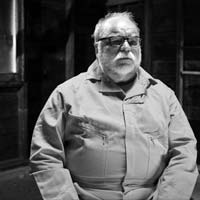
Gordon – Richard Riehle
Alex – Sara Paxton
Writer/Director – Jason Chen
Cinematographer – Brian Garbellini
1st AD – Jason C.
Steadicam Operator – Pedro Guimaraes
Stereographer – Dan Venti
Atom Rig Tech – Tonaci Tran
Key Grip – Mark Farney
Hair/Make-up – Natalie Driscoll
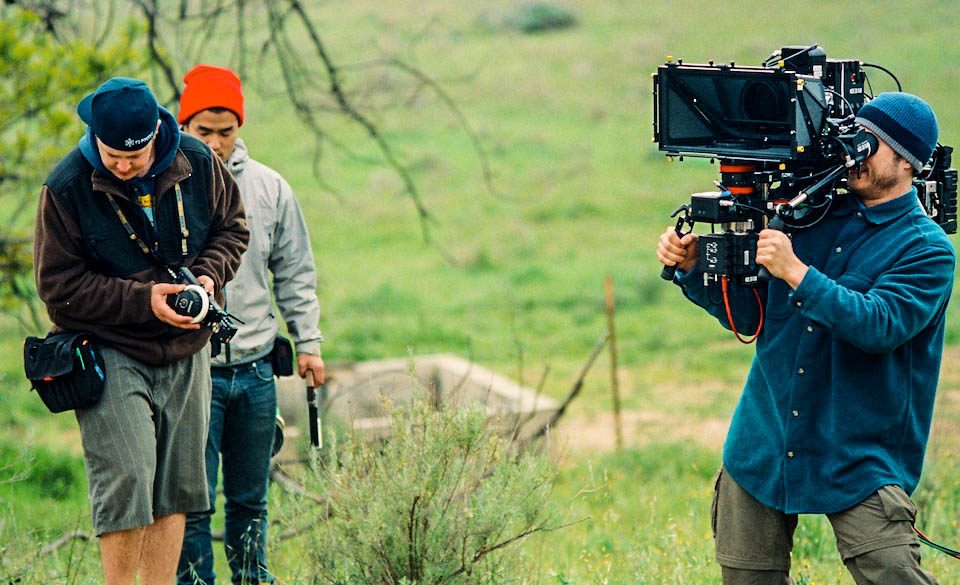

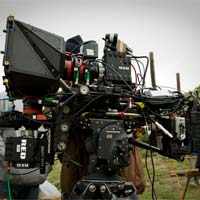
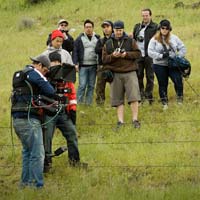


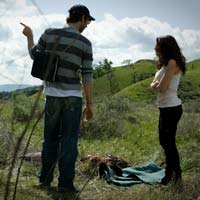
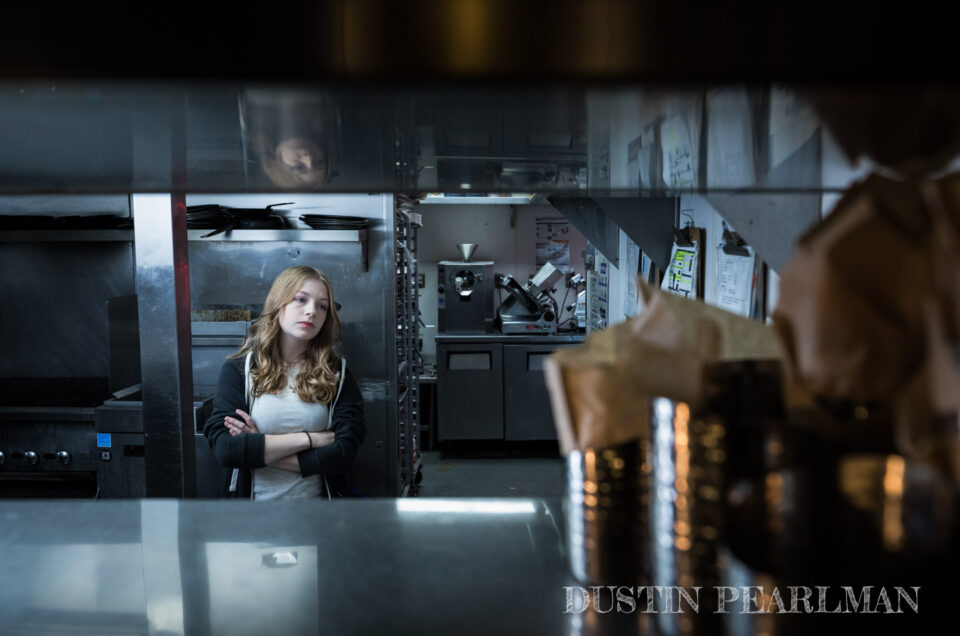


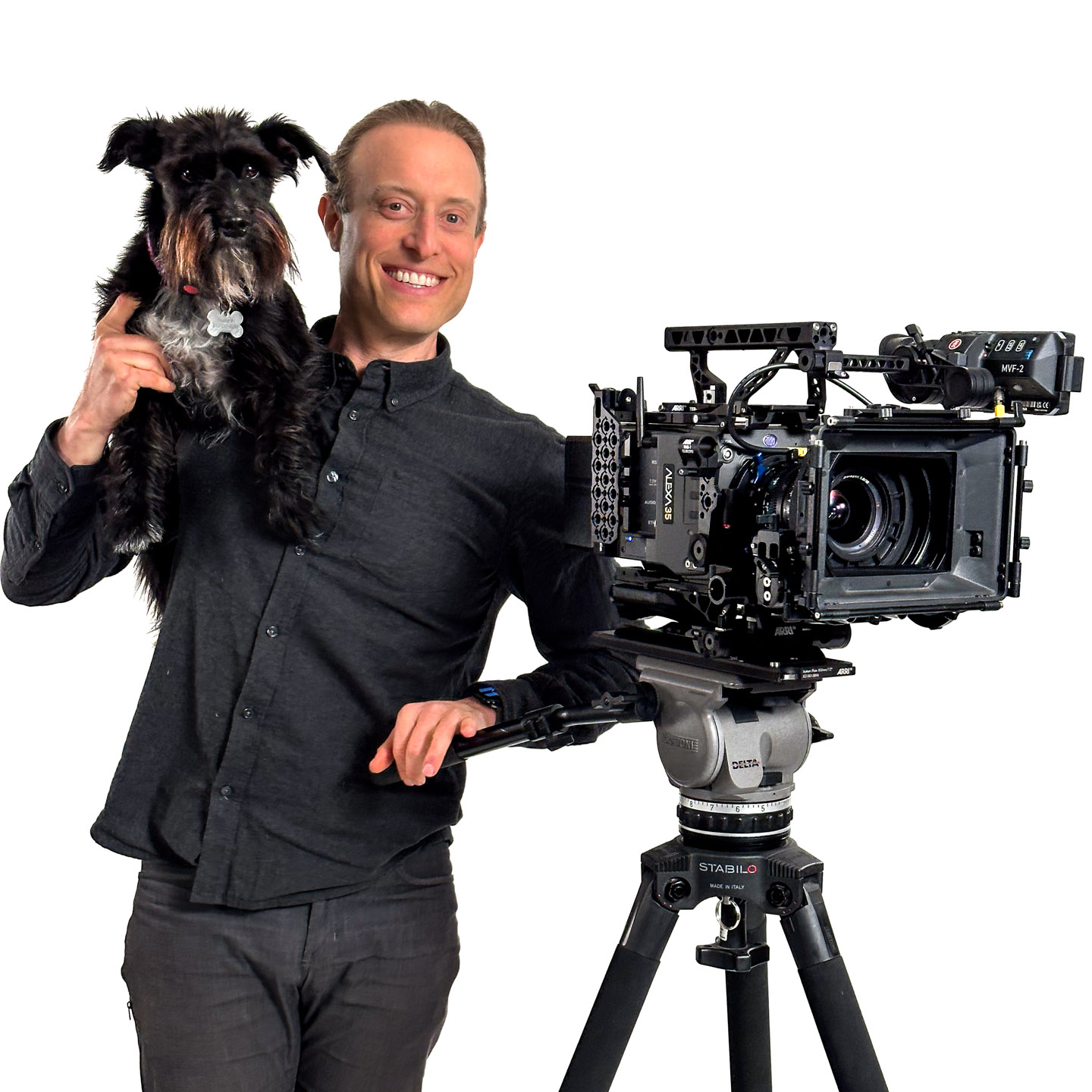

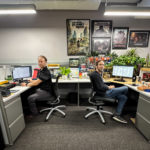

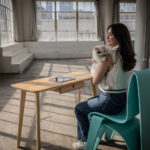
Leave a reply